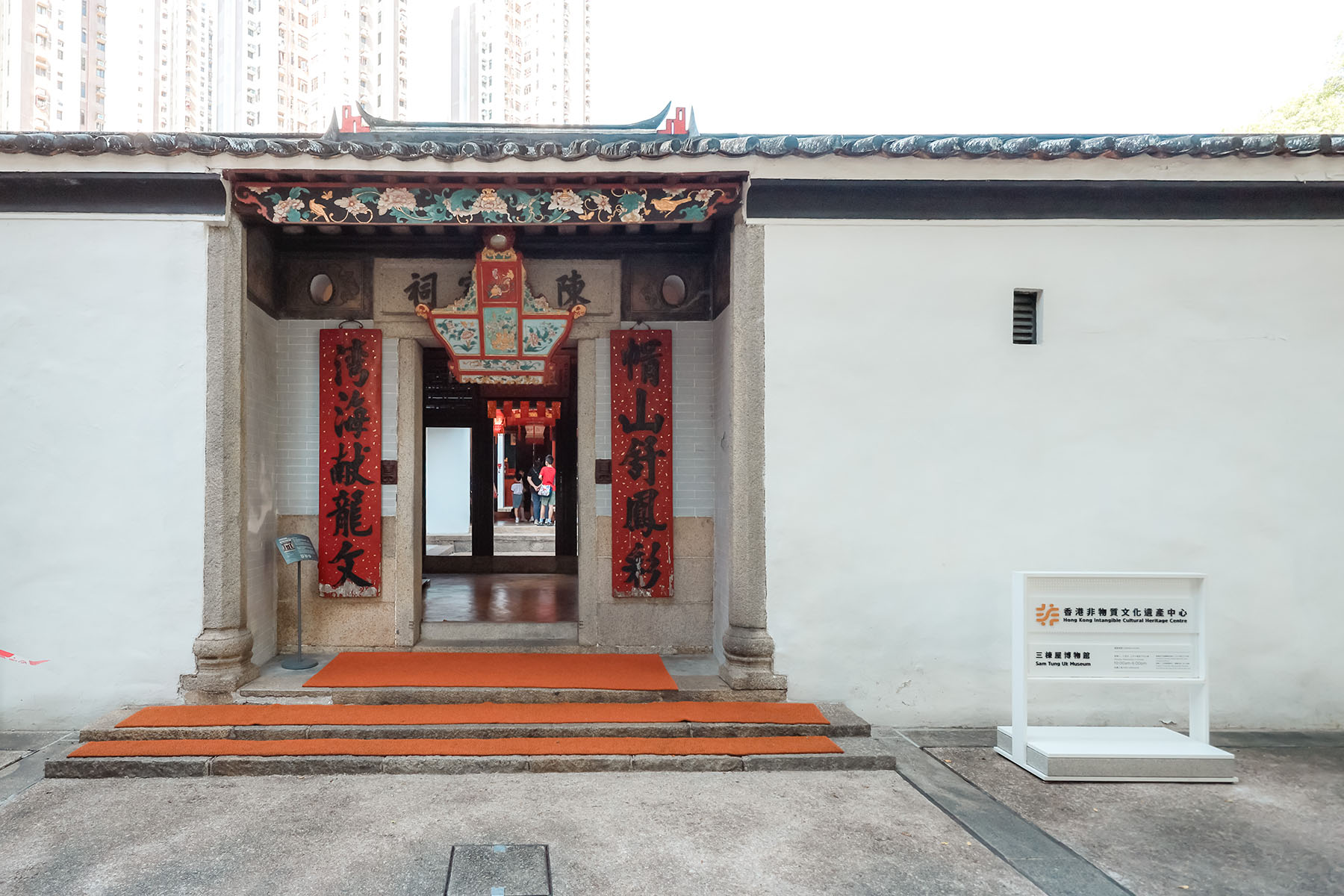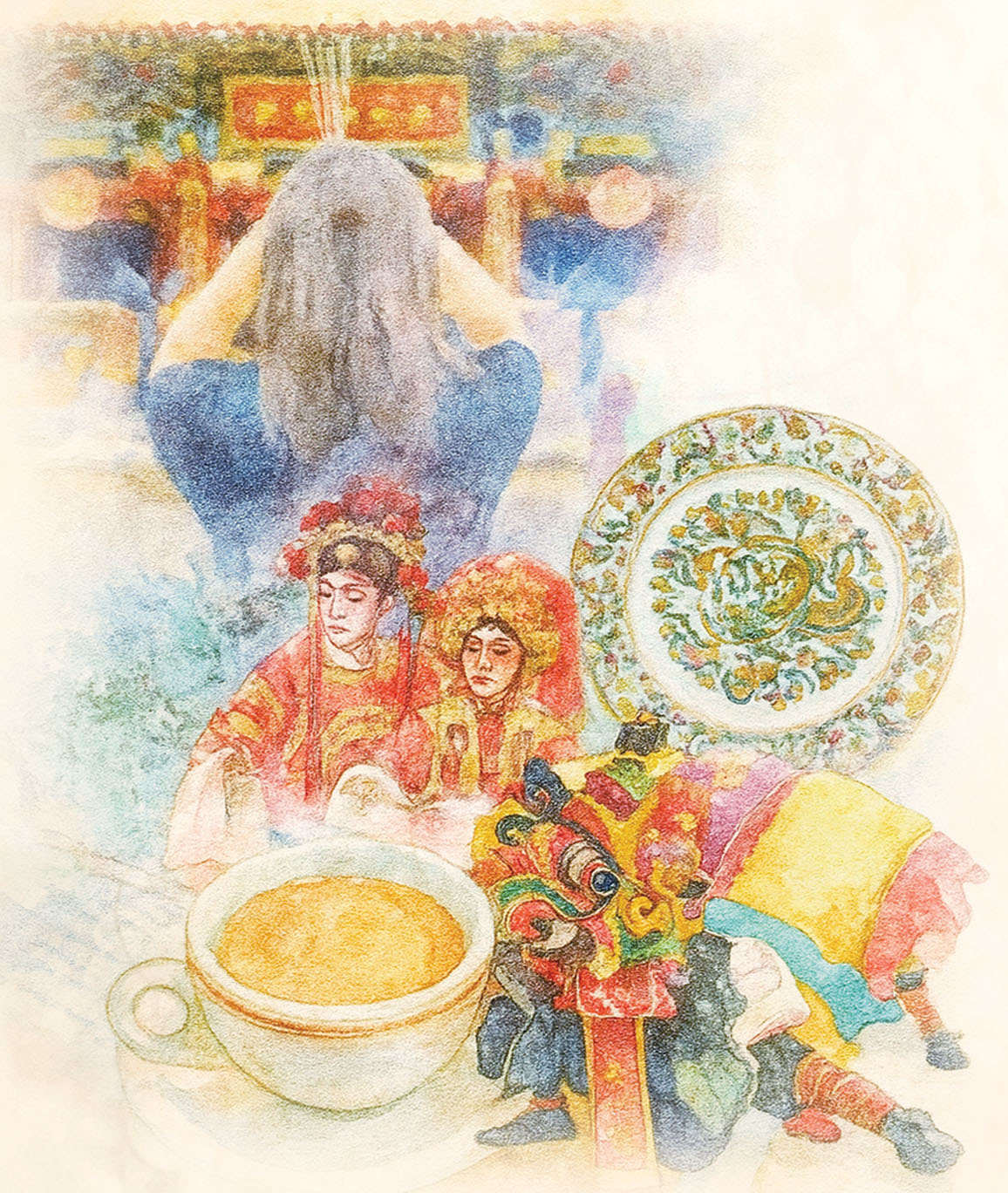Hong Kong is racing against time in its decadeslong efforts to preserve the city’s intangible cultural heritage and traditions that are disappearing amid rapid urban redevelopment and changing public perceptions. Luo Weiteng reports from Hong Kong.

For years, vestiges of the old city are fast disappearing under layers of concrete and high-rises. Yet, nestled amid the urban jungle of Tsuen Wan in the southwestern New Territories, the Sam Tung Uk Museum (literally meaning “three-beam dwelling”) stands as a portion of the past intact.
Housed in a meticulously restored Hakka walled village built in 1786, the well-tended museum is more than a salute to the past. Here, the past, present and the future are felt, anchored by Hong Kong’s Intangible Cultural Heritage Centre within its walls.
Walking along the compound’s sprawling lanes, Judith Ng Suet-kwan, head of Hong Kong’s ICH Office, speaks to China Daily about the cosmopolitan city’s decadeslong odyssey of keeping its heritage alive.
“Intangible cultural heritage isn’t merely something to be admired in museums. It has been deeply ingrained in our daily lives and is what we come across all the time,” says Ng, whose office made the museum even more relevant to the city’s heritage undertakings, with the setting up of the ICH Centre in 2016 as a display and resource platform.
READ MORE: HK launches first Intangible Cultural Heritage Month
While the few heritage buildings — still standing against the gleaming edifices of Hong Kong’s iconic skyline — offer tangible traces of the city’s past and have withstood the test of time, preserving intangible things is indeed a race against time. The metropolis’ urban development is advancing at a bewildering pace, in sharp contrast to the delicate concentration needed to learn and craft many of the traditions deeply rooted in Hong Kong’s DNA.
This makes Hong Kong’s inaugural ICH Month come to the fore, running across June as part of the city’s latest bid to better promote the time-honored practices, knowledge, customs and traditions.
The event, proposed by Chief Executive John Lee Ka-chiu in his Policy Address last year, is a strong response to the nation’s annual Cultural and Natural Heritage Day that falls on the second Saturday of June after being inaugurated in 2006.
Themed “ICH Around Town”, the month sets more than 100 intangible cultural treasures in motion with over 80 performances and 60 hands-on booths that are expected to draw around 100,000 people.

Unlocking a treasure trove
ICH may seem a bit tricky to tally, but that’s exactly what Hong Kong has done in the past decade — compiling a constellation of items that can best represent the city and its people.
Despite its small geographical size, Hong Kong now boasts 24 items on its own ICH representative list, along with a wider-ranging inventory of 507 items.
Besides the most recognizable treasures, the inventory offers more obscure gems, all pointing to the city’s rich and colorful history in trade and migration, on top of its centuries-long bonds with the Chinese mainland.
Four items, including guangcai (Canton famille rose porcelain)-making technique — the art of painting patterns on white porcelain dating to the early period of Qing Dynasty (1644-1911) — has added a kick to the representative list updated in December.
Twelve items from Hong Kong have been deemed a national ICH so far. Of particular note is yuet kek (Cantonese Opera) — arguably one of the best-loved art forms among Hong Kong audiences that earned its rightful place on the UNESCO’s Representative List of the ICH of Humanity in 2009.
Beyond the headline numbers, concerted preservation efforts have come from shared cultural roots and heritage passed down for generations between Hong Kong and the mainland. These include the first batch of cultural customs and traditions of national significance released by China in 2006 when the governments of Guangdong province and the Hong Kong and Macao special administrative regions joined hands to put yuet kek — a cornerstone of the cultural identity in the Cantonese-speaking region for centuries — and traditional herbal teas on the national map.
Collaboration is everything. Ng vividly recalls how she had raced against the clock to prepare a whole package of supporting materials in a matter of months for an even more ambitious joint application — carving out a place for the art form on the UNESCO stage.
The push paid off with the jewel in the crown of Lingnan culture becoming the first ever world heritage shared by the three regions, and the second genre of Chinese folk opera recognized as a living human treasure after Kunqu Opera made it in 2001.
Indeed, the topic of ICH is as equally crucial to Hong Kong as a cup of milk tea — the quintessential local Hong Kong beverage. During British rule before 1997, English tea with milk was served almost exclusively in hotels or high-end Western restaurants. Following World War II, the English tea “trend” eventually filtered down to traditional street food stalls for “localized” milk tea created for the common folk.
To make a perfect cup of Hong Kong-style milk tea, tea masters must learn the secret blend of tea leaves, the ideal brewing time, and the correct ratio of milk to tea. Such a unique technique featuring the use of sackcloth bags — more commonly known as “silk stockings” due to their brown color from tea stains — as filters secured a heritage status on the first batch of the HKSAR’s representative list in 2017.

‘Deep, timeless bond’
With Hong Kong having the best of both worlds, milk tea offers clues to the city’s cultural history and stands as a telling example of the vibrant fusion, says Ng. Broadly speaking, she believes what sets the city’s intangible cultural treasures apart from elsewhere is its mixture of an all-embracing Lingnan culture and a British influence. Such a sophisticated and unique melding of Eastern and Western pull makes Hong Kong the ultimate city of contrasts, where cultural heritage is allowed to tell the stories of resilience and reverence at critical historical junctures.
Despite the pervasive sway of Western culture, traditional Chinese elements have left an indelible imprint on the city, in an imperceptible way that touches the depth of local souls in the most unexpected moments.
Pounded tea, or lei cha in Chinese — a signature beverage among the Hakka Chinese community from southern Jiangxi province — is among the finely selected intangible heritage items on display during ICH Month and Hong Kong’s second edition of the Chinese Culture Festival.
At the first sight of the ancient delicacy, thought to have been invented during the turbulent Three Kingdoms era (220-280), and honored as a national heritage in 2014, Ng says she’s surprised at the striking parallels between pounded tea and vegetable tea — a specialty from parts of Guangdong.
Ng knows vegetable tea like the back of her hand — it isn’t just an ICH item she had tried so hard to get it onto the HKSAR’s representative list, but a living tradition practiced at Spring Festival — one of the most solemn and oldest festivals in China and among global Chinese communities.
“It has long nurtured a sense of belonging to the family and Hong Kong. But now, people hundreds of miles away on the mainland are found to have so much in common with us. Here comes a deep, timeless bond that has bridged generations and geographies. Even from afar, intangible heritage has united us as one nation,” says Ng, calling her feelings “soul quake”.
ALSO READ: Nostalgia rules
Both iconic tea-based drinks offer a glimpse of the nation’s omnipresent tea culture that has woven into the fabric of everyday life. Ng says she has lost count of the “wow” moments when people happen to discover that the traditions and customs they have grown up with and once taken for granted — be it the wonton-making skill learned from parents or bamboo steamers found in every household — turn out to be living cultural treasures.
The veteran curator and cultural relics conservator draws inner strength from the well-earned UNESCO inscription of Spring Festival celebrations in December, as the most important festival on the Chinese calendar connects Chinese communities across continents and generations with enduring vitality.
“ICH is so steeped in local culture. Far from being elitist endeavors, these living treasures breathe in bustling streets and thrive in grassroots practices. Naturally, it sparks a strong sense of duty to make them more accessible to a broader public. That’s how it should be.”
Contact the writer at sophialuo@chinadailyhk.com


